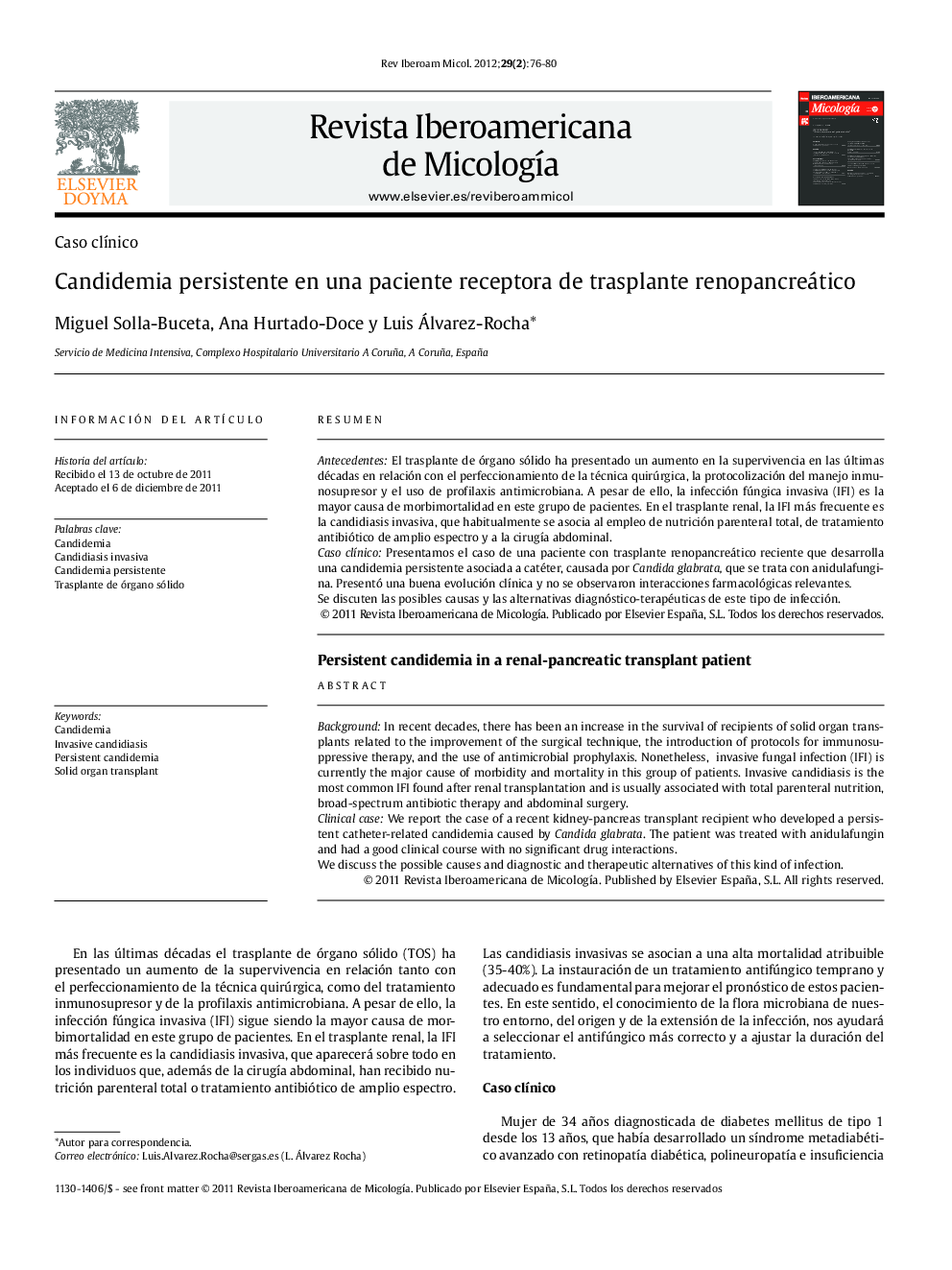| Article ID | Journal | Published Year | Pages | File Type |
|---|---|---|---|---|
| 3418886 | Revista Iberoamericana de Micología | 2012 | 5 Pages |
ResumenAntecedentesEl trasplante de órgano sólido ha presentado un aumento en la supervivencia en las últimas décadas en relación con el perfeccionamiento de la técnica quirúrgica, la protocolización del manejo inmu-nosupresor y el uso de profilaxis antimicrobiana. A pesar de ello, la infección fúngica invasiva (IFI) es la mayor causa de morbimortalidad en este grupo de pacientes. En el trasplante renal, la IFI más frecuente es la candidiasis invasiva, que habitualmente se asocia al empleo de nutrición parenteral total, de tratamiento antibiótico de amplio espectro y a la cirugía abdominal.Caso clínicoPresentamos el caso de una paciente con trasplante renopancreático reciente que desarrolla una candidemia persistente asociada a catéter, causada por Candida glabrata, que se trata con anidulafungi-na. Presentó una buena evolución clínica y no se observaron interacciones farmacológicas relevantes.Se discuten las posibles causas y las alternativas diagnóstico-terapéuticas de este tipo de infección.
BackgroundIn recent decades, there has been an increase in the survival of recipients of solid organ trans-plants related to the improvement of the surgical technique, the introduction of protocols for immunosu-ppressive therapy, and the use of antimicrobial prophylaxis. Nonetheless, invasive fungal infection (IFI) is currently the major cause of morbidity and mortality in this group of patients. Invasive candidiasis is the most common IFI found after renal transplantation and is usually associated with total parenteral nutrition, broad-spectrum antibiotic therapy and abdominal surgery.Clinical caseWe report the case of a recent kidney-pancreas transplant recipient who developed a persis-tent catheter-related candidemia caused by Candida glabrata. The patient was treated with anidulafungin and had a good clinical course with no significant drug interactions.We discuss the possible causes and diagnostic and therapeutic alternatives of this kind of infection.
